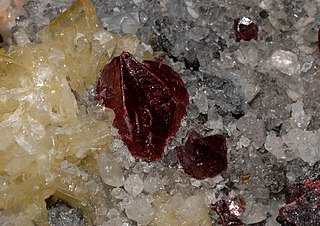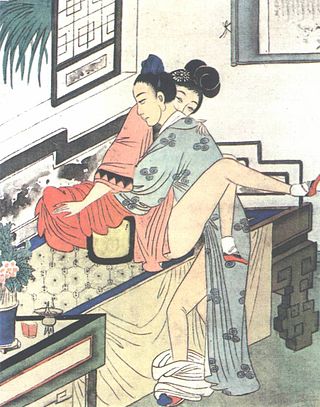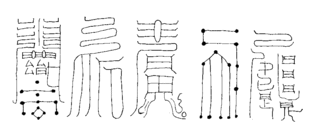
Taoism or Daoism is a diverse tradition indigenous to China, variously characterized as both a philosophy and a religion. Taoism emphasizes living in harmony with the Tao—generally understood as being the impersonal, enigmatic process of transformation ultimately underlying reality. The concept originates in the Chinese word 道, which has numerous related meanings: possible English translations include 'way', 'road', and 'technique'. Taoist thought has informed the development of various practices within the Taoist tradition and beyond, including forms of meditation, astrology, qigong, feng shui, and internal alchemy. A common goal of Taoist practice is self-cultivation resulting in a deeper appreciation of the Tao, and thus a more harmonious existence. There are different formulations of Taoist ethics, but there is generally emphasis on virtues such as effortless action, naturalness or spontaneity, simplicity, and the three treasures of compassion, frugality, and humility. Many Taoist terms lack simple definitions and have been translated in several different ways.

The Three Pure Ones, also translated as the Three Pure Pellucid Ones, the Three Pristine Ones, the Three Divine Teachers, the Three Clarities, or the Three Purities, are the three highest gods in the Taoist pantheon. They are regarded as pure manifestations of the Tao and the origin of all sentient beings, along with the "lords of the Three Life Principles", or qi. They were also gods who were "associated with the sky, the earth and the underworld."

Mantak Chia is a Taoist Master. Mantak Chia is the creator of the Healing Tao, Tao Yoga, Universal Healing Tao System, and Tao Garden Health Spa & Resort, located in the northern countryside of Chiang Mai, Thailand. He wrote more than 60 books on Taoist practices and taught the principles of Taoist internal arts. His books have been translated into more than 40 languages. He views himself primarily as a teacher.

Dantian is a concept in traditional Chinese medicine loosely translated as "elixir field", "sea of qi", or simply "energy center". Dantian are the "qi focus flow centers", important focal points for meditative and exercise techniques such as qigong, martial arts such as tai chi, and in traditional Chinese medicine.

Sun Bu'er, one of the Taoist Seven Masters of Quanzhen, lived c. 1119–1182 C.E. in the Shandong province of China. She was a beautiful, intelligent, wealthy woman, married with three children. Her family name was Sun and her first name was Fuchun (富春), Bu'er being her name in religion. Her husband Ma Yu was a close disciple of Wang Chongyang. At the age of 51, she took up the study of the Tao and herself became a disciple of Wang Chongyang, serving as a Taoist priestess. She eventually left her home and traveled to the city of Luoyang where after twelve years of practice, at Fengxiangu cave, she attained the Tao and, it is said, became an immortal. Sun was a teacher with several disciples, and founded the Purity and Tranquility School, and wrote many poems.
The Three Treasures or Three Jewels are theoretical cornerstones in traditional Chinese medicine and practices such as neidan, qigong, and tai chi. They are also known as jing, qi, and shen.

Chinese alchemy is a historical Chinese approach to alchemy, a pseudoscience. According to original texts such as the Cantong qi, the body is understood as the focus of cosmological processes summarized in the five agents of change, or Wuxing, the observation and cultivation of which leads the practitioner into alignment and harmony with the Tao. Therefore, the traditional view in China is that alchemy focuses mainly on longevity and the purification of one's spirit, mind and body, providing, health, longevity and wisdom, through the practice of Qigong and wuxingheqidao. The consumption and use of various concoctions known as alchemical medicines or elixirs, each of which having different purposes but largely were concerned with immortality.

Taoist sexual practices are the ways Taoists may practice sexual activity. These practices are also known as "joining energy" or "the joining of the essences". Practitioners believe that by performing these sexual arts, one can stay in good health, and attain longevity or spiritual advancement.

Neidan, or internal alchemy, is an array of esoteric doctrines and physical, mental, and spiritual practices that Taoist initiates use to prolong life and create an immortal spiritual body that would survive after death. Also known as Jindan, inner alchemy combines theories derived from external alchemy, correlative cosmology, the emblems of the Yijing, and medical theory, with techniques of Taoist meditation, daoyin gymnastics, and sexual hygiene.

A xian is any manner of immortal, mythical being within the Taoist pantheon or Chinese folklore. Xian has often been translated into English as "immortal".
The Wuzhen pian is a 1075 Taoist classic on Neidan-style internal alchemy. Its author Zhang Boduan was a Song dynasty scholar of the Three teachings.
Wu-liu pai, or Wu-liu fa pai, also known as Xianfo — a school of Taoism with main focus on internal alchemy (neidan).
Fangshi were Chinese technical specialists who flourished from the third century BCE to the fifth century CE. English translations of fangshi include alchemist, astrologer, diviner, exorcist, geomancer, doctor, magician, monk, mystic, necromancer, occultist, omenologist, physician, physiognomist, technician, technologist, thaumaturge, and wizard.

Baopuzi is a literary work written by Ge Hong, , a scholar during the turbulent Jin dynasty.

The Yellow Court Classic, a Chinese Daoist meditation text, was received from an unknown source by Wei Huacun, one of the founders of the Shangqing School, in 288 CE. The first reference to the text appears in the archives of the famous alchemist and collector of Daoist texts, Ge Hong, in the 4th century.

Waidan, translated as 'external alchemy' or 'external elixir', is the early branch of Chinese alchemy that focuses upon compounding elixirs of immortality by heating minerals, metals, and other natural substances in a luted crucible. The later branch of esoteric neidan 'inner alchemy', which borrowed doctrines and vocabulary from exoteric waidan, is based on allegorically producing elixirs within the endocrine or hormonal system of the practitioner's body, through Daoist meditation, diet, and physiological practices. The practice of waidan external alchemy originated in the early Han dynasty, grew in popularity until the Tang (618–907), when neidan began and several emperors died from alchemical elixir poisoning, and gradually declined until the Ming dynasty (1368–1644).
The Pill of Immortality, also known as xiandan (仙丹), jindan (金丹) or dan (丹) in general, was an elixir or pill sought by Chinese alchemists to confer physical or spiritual immortality. It is typically represented as a spherical pill of dark color and uniform texture, made of refined medical material. Colloquially and in Chinese medicine, the term can also refer to medicine of great efficacy.

Liu Yiming (1734–1821) (刘一明) was a Chinese Taoist master, thinker, and writer. He was one of the main representatives of Taoist Internal Alchemy, or Neidan. He was an 11th-generation master of one of the northern branches of the Longmen 龍門 lineage, and the author of a large number of works that illustrate his views on both Taoism and Neidan.

Shijie, which has numerous translations such as liberation from the corpse and release by means of a corpse, is an esoteric Daoist technique for an adept to transform into a xian, typically using some bureaucratic ruse to evade the netherworld administrative system of life and death registration. The many varieties of shijie range from deceitful cases, such as a person feigning death by substituting the corpse of their recently deceased grandfather as their own, to supernatural cases, such as using a waidan alchemical sword to temporarily create a corpse-simulacrum, which enables one to escape and assume a new identity.

The roles of women in Taoism have differed from the traditional patriarchy over women in ancient and imperial China. Chinese women had special importance in some Taoist schools that recognized their transcendental abilities to communicate with deities, who frequently granted women with revealed texts and scriptures. Women first came to prominence in the Highest Clarity School, which was founded in the 4th century by a woman, Wei Huacun. The Tang dynasty (618–907) was a highpoint for the importance of Daoist women, when one-third of the Shangqing clergy were women, including many aristocratic Taoist nuns. The number of Taoist women decreased until the 12th century when the Complete Perfection School, which ordained Sun Bu'er as the only woman among its original disciples, put women in positions of power. In the 18th and 19th centuries, women Taoists practiced and discussed nüdan, involving gender-specific practices of breath meditation and visualization. Furthermore, Taoist divinities and cults have long traditions in China, for example, the Queen Mother of the West, the patron of xian immortality, He Xiangu, one of the Eight Immortals, and Mazu, the protectress of sailors and fishermen.















